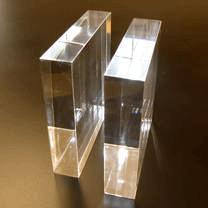Barring an actual security incident, properly installed and cared for bullet-resistant glass should last as long as your building. Nonetheless, reports occasionally surface of facilities–such as Ohio’s Crawford County Jail–having to replace many of their ballistic glass windows because they’ve cracked due to “everyday wear-and-tear.”
This explanation doesn’t sit well with Total Security Solutions vice president Jim Richards. While he grants that even quality bullet-resistant glass could crack due to radical temperature fluctuations or building settling over time, he firmly believes that a proper installation can almost always prevent such damage.
Mechanical Strain on Bulletproof Glass
There are two places where mechanical strains comes to bear on a sheet of bulletproof glass: At the frame, and within the glass itself. Under normal conditions, neither should lead to cracked glazing. As a building settles over time, it isn’t unusual for doorways and windows to be nudged slightly askew. Similarly, glass will expand and contract due to heat. Both of these factors increase the pressure on sheets of ballistic glass meet structural members. If the glazing is too tight in the frames, that could cause a crack.
This is why a good installer uses setting blocks around any sheet of bullet-resistant glass. These are quarter- to half-inch thick blocks of dense rubber, which leave at least a one-quarter-inch gap between the glazing and the bottom of the frame’s channel on all sides. This buffer zone (which is concealed by the ballistic framing) prevents pressure from being transferred to the glass itself.
Bulletproof Glass vs. Desert Conditions
A slightly trickier problem is one of heat. Some environments see pretty wide variations in temperature on a daily basis, which can be hard on any building material. In recent months, Total Security Solutions has done more work in the Dakotas, and addressed such concerns. “If you get radical swings in temperature,” Jim notes, “the glass and polycarbonate are going to react differently to a rapid change. If the glass isn’t made with the proper interlayers that allow for expansion, then a lot of energy builds up. The layers are going to want to sheer, and one of the layers will crack.”
Any place where temperatures are regularly known to swing beyond 40-degrees in one day are a concern. “In the Dakotas and Arizona they have problems with exterior bullet-resistant glass sometimes for just this reason. You can be in the 90s during the day and the 40s at night. I’ve always checked that ahead of time with our [ballistic glass] manufacturers. They know that our material can end up going in any environment.”
Jim acknowledges that a cracked window may still be bullet-resistant–and even function up to its UL-rating–but there’s no way to be certain until the lead starts flying. Play it safe and have any cracked bullet-resistant glass looked at by a qualified bullet proof system designer.
Next Steps
- Download our Ultimate Guide to Bulletproof Glass to get more information about bulletproof glass and bullet resistant barriers
- Read more blog posts about bulletproof glass
- Sign up for our newsletter to stay up to date with security news and information


